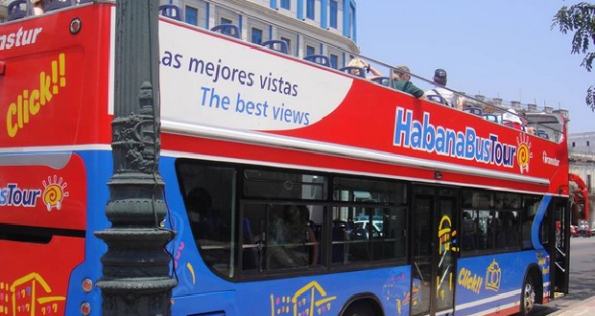If you speak Spanish, it’s advisable to get to know Havana by taking private taxis. In a rented car, air-conditioned and with a map of the capital, it’s more pleasurable, but also more expensive, and you wouldn’t be able to chat with the habaneros.
If you know the city only through the guided visits to museums or cigar factories, organized by tourist agencies, you will have good photos when you return to your country, but you will only have seen a postcard of Havana.
You can decide to drink mojitos, stroll on the Malecon, flirt with prostitutes in a cafe where you need hard currency to listen to a duo singing Compay Segundo’s Chan Chan at your table. Or you can discover the other face of Havana, ignored by the official press. Then, first hand, you will know the priorities of ordinary Cubans.
The capital of Cuba has in its favor the fact that it still is not as dangerous as Caracas, Medellin or Michoacan. You can walk through rough and poor neighborhoods without fear of being assaulted (I advise you to go during the day).
Better than reserving a hotel is renting a room in some private home. For your trips around the city, the ideal thing is to move around in the old U.S. cars known as almendrones.
And talk to the passengers. There is no platform more authentic and liberal in Cuba than the private taxis. As in any capital of the world, the Havana taxi drivers possess a culture of speech and an acceptable level of information.
You will find out that many of the Cuban taxi drivers are doctors, engineers, retired military men or professionals who, after their work day, sit at the steering wheel, trying to earn some extra pesos that will permit them to complement their poor salaries.
The Havana taxi drivers seem to be dissidents when they speak, but they’re not. They, like numerous people you find in the lines or in the streets, openly criticize the government.
The list of complaints about the state of things on the island is extensive. Traveling in a 1954 Ford, with a South Korean motor and a Japanese gear box, you will know first-hand that people aren’t applauding Raul Castro’s reforms with much enthusiasm now.
Be prepared to listen to a dissertation on the daily hardships. One suggestion: before your trip around the city, in your backpack carry deodorants, tubes of toothpaste or soap to offer to the people you talk to. Right now, these articles are scarce in Cuba (see the Note at the end).
Havana taxis are a microphone open to different political opinions. And in their interior there is more democracy than in the monotone national parliament. In the almendrones there are usually people who think differently. Each reveals his opinion. Loudly and gesticulating with his hands, typical of Cubans.
Upon arriving at his destination, the passenger who supports the Regime says goodbye amicably to the one who wants profound changes in his country. Two details: the old Havana taxis don’t have air conditioning and the drivers listen to reggaeton or salsa music at exaggerated volume.
If you get into a jeep, which can fit up to 10 people, the trip is uncomfortable. But there is no better way to make people-to-people contact than to travel in private taxis. And they are very cheap. For 50 cents or a dollar on longer journeys, you can get to know the other face of Havana. It’s not recommended to take the urban omnibus: owing to the bad service and overcrowding, what should be an exploration of the city and a motive to make contact with its people can become a torture.
Iván García
Photo: Taken from Panoramix.
Note. In Cuba something is always lacking. Sometimes the scarcity is most visible in the capital, but usually where you find a lack of most products, food or hygiene, is in the interior of the country. After writing this piece, independent journalists were reporting that “eggs were missing.” I don’t know if eggs have reappeared, but now salt is missing.
On March 5, Ernesto García Díaz wrote in Cubanet that salt was hard to find in the grocery stores, markets and hard currency markets (TRD), where a kilo nylon bag of Cuban salt with the stamp “Caribeña” cost 45 cents (10.80 Cuban pesos). In the Ultra TRD [the government-run “Hard Currency Collection Store”], an employee told the journalist that “it’s been some time since we’ve had Caribeña salt. We are selling a fine Andalusian salt of the brand “Aucha” at the price of 1.65 CUC ($US 1.58) a kilo.”
In Cuba there are five saltworks that supposedly should guarantee the distribution of salt for the ration book, at the rate of one kilo for a nuclear family of up to 3 people, every three months. But because they haven’t managed to extract more than 400 million tons annually, the government has had to import salt, as occurred in 2008, when they bought 30 million tons of salt at a cost of 9 million dollars (Tania Quintero).
Translated by Regina Anavy
8 March 2014

